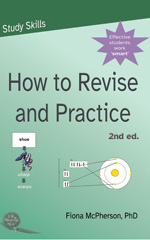Successful Transfer
- Transfer refers to the extent to which learning is applied to new contexts.
- Transfer is facilitated by:
- understanding
- instruction in the abstract principles involved
- demonstration of contrasting cases
- explicit instruction of transfer implications
- sufficient time
- Learning for transfer requires more time and effort in the short term, but saves time in the long term.
Transfer refers to the ability to extend (transfer) learning from one situation to another. For example, knowing how to play the piano doesn’t (I assume) help you play the tuba, but presumably is a great help if you decide to take up the harpsichord or organ. Similarly, I’ve found my knowledge of Latin and French a great help in learning Spanish, but no help at all in learning Japanese.
Transfer, however, doesn’t have to be positive. Your existing knowledge can hinder, rather than help, new learning. In such a situation we talk about negative transfer. We’ve all experienced it. At the moment I’m experiencing it with my typing -- I've converted my standard QWERTY keyboard to a Dvorak one (you can hear about this experience in my podcast, if you're interested).
Teachers and students do generally hope that learning will transfer to new contexts. If we had to learn how to deal with every single possible situation we might come across, we’d never be able to cope with the world! So in that sense, transfer is at the heart of successful learning (and presumably the ability to transfer new learning is closely tied to that elusive concept, intelligence).
Here’s an example of transfer (or lack of it) in the classroom.
A student can be taught the formula for finding the area of a parallelogram, and will then be capable of finding the area of any parallelogram. However, if given different geometric figures, they won’t be able to apply their knowledge to calculate the area, because the formula they have memorized applies only to one specific figure — the parallelogram.
However, if the student is instead encouraged to work out how to calculate the area of a parallelogram by using the structural relationships in the parallelogram (for example, by rearranging it into a rectangle by moving one triangle from one end to the other), then they are much more likely to be able to use that experience to work out the areas of a different figure.
This example gives a clue to one important way of encouraging transfer: abstraction. If you only experience a very specific example of a problem, you are much less likely to be able to apply that learning to other problems. If, on the other hand, you are also told the abstract principles involved in the problem, you are much more likely to be able to use that learning in a variety of situations. [example taken from How People Learn]
Clearly there is a strong relationship between understanding and transfer. If you understand what you are doing, you are much more likely to be able to transfer that learning to problems and situations you haven’t encountered before — which is why transfer tests are much better tests of understanding than standard recall tests.
That is probably more obvious for knowledge such as scientific knowledge than it is for skill learning, so let me tell you about a classic study [1]. In this study, children were given practice in throwing darts at an underwater object. Some of the children were also instructed in how light is refracted in water, and how this produces misleading information regarding the location of objects under water. While all the children did equally well on the task they practiced on — throwing darts at an object 12 inches under water — the children who had been given the instruction did much better when the target was moved to a place only 4 inches under water.
Understanding is helped by contrasting cases. Which features of a concept or situation are important is often only evident when you can see different but related concepts. For example, you can’t fully understand what an artery is unless you contrast it with a vein; the concept of recognition memory is better understood if contrasted with recall memory.
Transfer is also helped if transfer implications are explicitly pointed out during learning, and if problems are presented in several contexts. One way of doing that is if you use “what-ifs” to expand your experience. That is, having solved a problem, you ask “What if I changed this part of the problem?”
All of this points to another requirement for successful transfer — time. Successful, “deep”, learning requires much more time than shallow rote learning. On the other hand, because it can apply to a much wider range of problems and situations, is much less easily forgotten, and facilitates other learning, it saves a lot of time in the long run!
- National Research Council, 1999. How People Learn: Brain, Mind, Experience, and School. Washington, D.C.: National Academy Press. https://www.nap.edu
1. Scholckow & Judd, described in Judd, C.H. 1908. The relation of special training to general intelligence. Educational Review, 36, 28-42.
